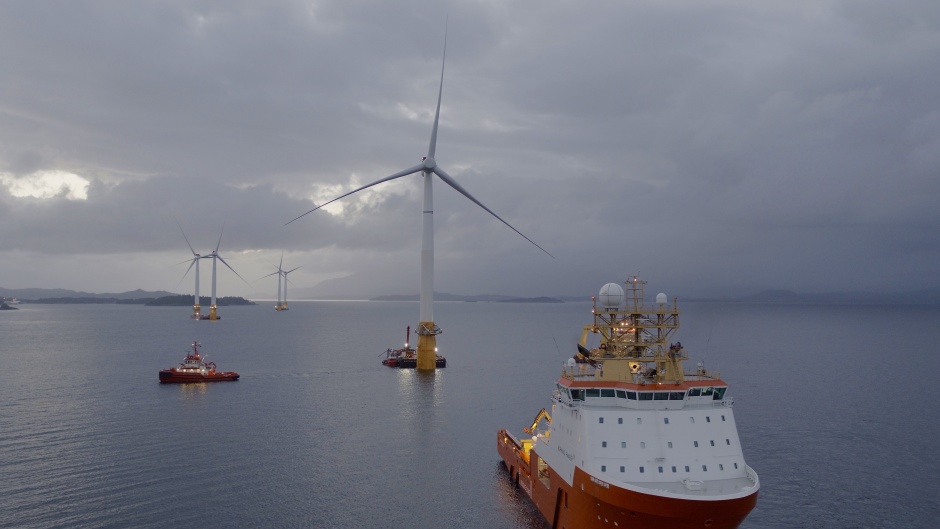
Comprising six 5MW floating turbines, the 30MW Hywind Scotland project is located 25km offshore from Peterhead in Aberdeenshire, Scotland and will provide power for approximately 20,000 households. The £190m Hywind project is operated by Statoil in partnership with Masdar.
“Hywind can be used for water depths up to 800m, thus opening up areas that so far have been inaccessible for offshore wind,” said Irene Rummelhoff, executive vice president of Statoil’s New Energy Solutions business. “The learnings from Hywind Scotland will pave the way for new global market opportunities for floating offshore wind energy. Through their government's support to develop the Hywind Scotland project, the UK and Scotland are now at the forefront of the development of this exciting new technology.”
The onshore operations and maintenance base for Hywind Scotland is located in Peterhead, while the operations centre is located in Great Yarmouth, Norfolk.
According to Statoil, recent years have seen significant cost reductions in onshore and bottom fixed offshore wind sectors and floating wind is expected to follow a similar downward trajectory over the next decade.
“Statoil has an ambition to reduce the costs of energy from the Hywind floating wind farm to €40-60 €/MWh by 2030. Knowing that up to 80 per cent of the offshore wind resources are in deep waters [+60 metres] where traditional bottom fixed installations are not suitable, floating offshore wind is expected to play a significant role in the growth of offshore wind,” said Rummelhoff.
https://www.theengineer.co.uk/second-wind-could-floating-turbines-reshape-offshore-renewables/
Commenting on today’s development, Tom Delay, CEO, The Carbon Trust said: “A decade ago Beatrice Offshore Wind Demonstrator in the Moray Firth was the world’s first deep-water project with fixed foundations. Today marks another crucial milestone in the development for offshore wind, and again it is happening in Scotland – the world’s first commercial floating wind project.
“This will be the beginning to expand the global deployment of offshore wind to areas where fixed foundations are not feasible. With the opening of the Hywind Pilot Park today, Scotland becomes the world leader for floating wind deployment and we can say with confidence that floating wind is viable. However, it is crucial that innovation continues to drive down costs and the right policy is in place to increase investment.”
Battery storage has the potential to mitigate intermittency and optimise output, and to this end Statoil and Masdar will also install Batwind, a 1MWh lithium battery storage solution in conjunction with the Hywind Scotland project.




Glasgow trial explores AR cues for autonomous road safety
They've ploughed into a few vulnerable road users in the past. Making that less likely will make it spectacularly easy to stop the traffic for...